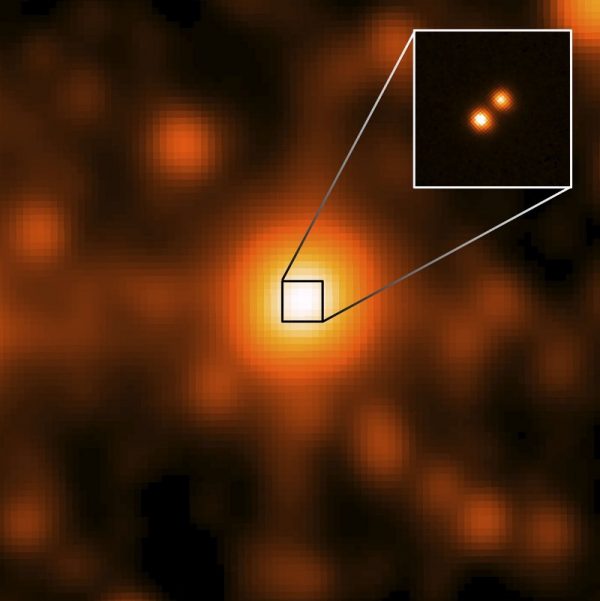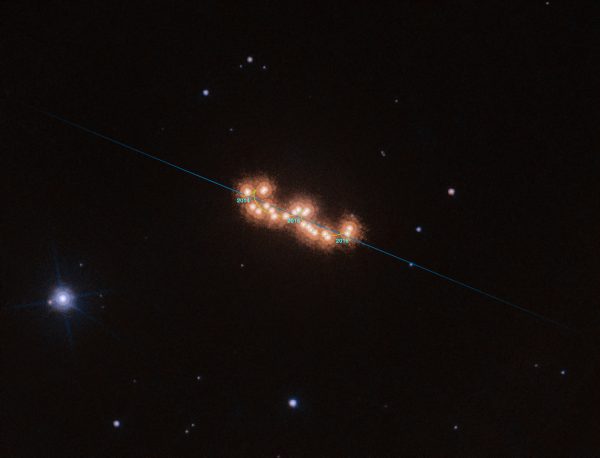"[Brown dwarfs] appear to live a more exciting life than we presumed. They are too big to be planets and two small to be stars, but it does appear that if you watch one it has very active events... there is action going on." -Lars Bildsten
For every star that’s out there in the Universe, for every object that ignited hydrogen fusion in its core, there are many other objects out there that never got massive enough to do so. The largest failures, those that gathered between 13 and 80 Jupiter masses’ worth of material, are known as brown dwarfs. They achieve deuterium fusion in their core, but never cross that critical threshold to become true stars.
 These are the two brown dwarfs that make up Luhman 16, and they may eventually merge together to create a star. Image credit: NASA/JPL/Gemini Observatory/AURA/NSF.
These are the two brown dwarfs that make up Luhman 16, and they may eventually merge together to create a star. Image credit: NASA/JPL/Gemini Observatory/AURA/NSF.
Many brown dwarfs, just like many stars, though, come in binary systems. If you were to add up all the mass in some of these systems, it would, in fact, be enough to create a star out of. The closest brown dwarf binary to us, Luhman 16, has exactly the right conditions that it could create a star if a merger ever took place.


Ethan,
Thank you. That was a delightful story!
One thing's for sure, Brown Dwarf. You'll never be bright enough to make Dad Star proud.
Apparently the number of stars smaller than our sun are about 5 times more than our sun size stars therefore the number of dwarf planets maybe about 25 times more than our sun size stars and the smaller planets maybe about 125 times and the number of moons in universe maybe about 625 times more than our sun size stars. don't these many unvisible balls plus blackholes and all visible galaxis make a wall for any kind of future telescopes to be able to see the furthest galaxies in our universe even these visible and unvisible maters continiously changing their their possitions.
Just as a extra possibility, what would happen if a brown dwarf happened across a really big gas cloud?,
In adition these huge number of balls may also cause to prevent any extra waves to come towawrd radio telescopes on the earth and the telescopes witch will orbit around the earth,so our universe can be extremely bigger than What we see or get by radio waves.
So we can reach to this result that the Big bang phenomenas can happen as like as producing galaxies happens in a mother universe.
Ethan, is it possible to determine where the Big Bang occurred in our universe?